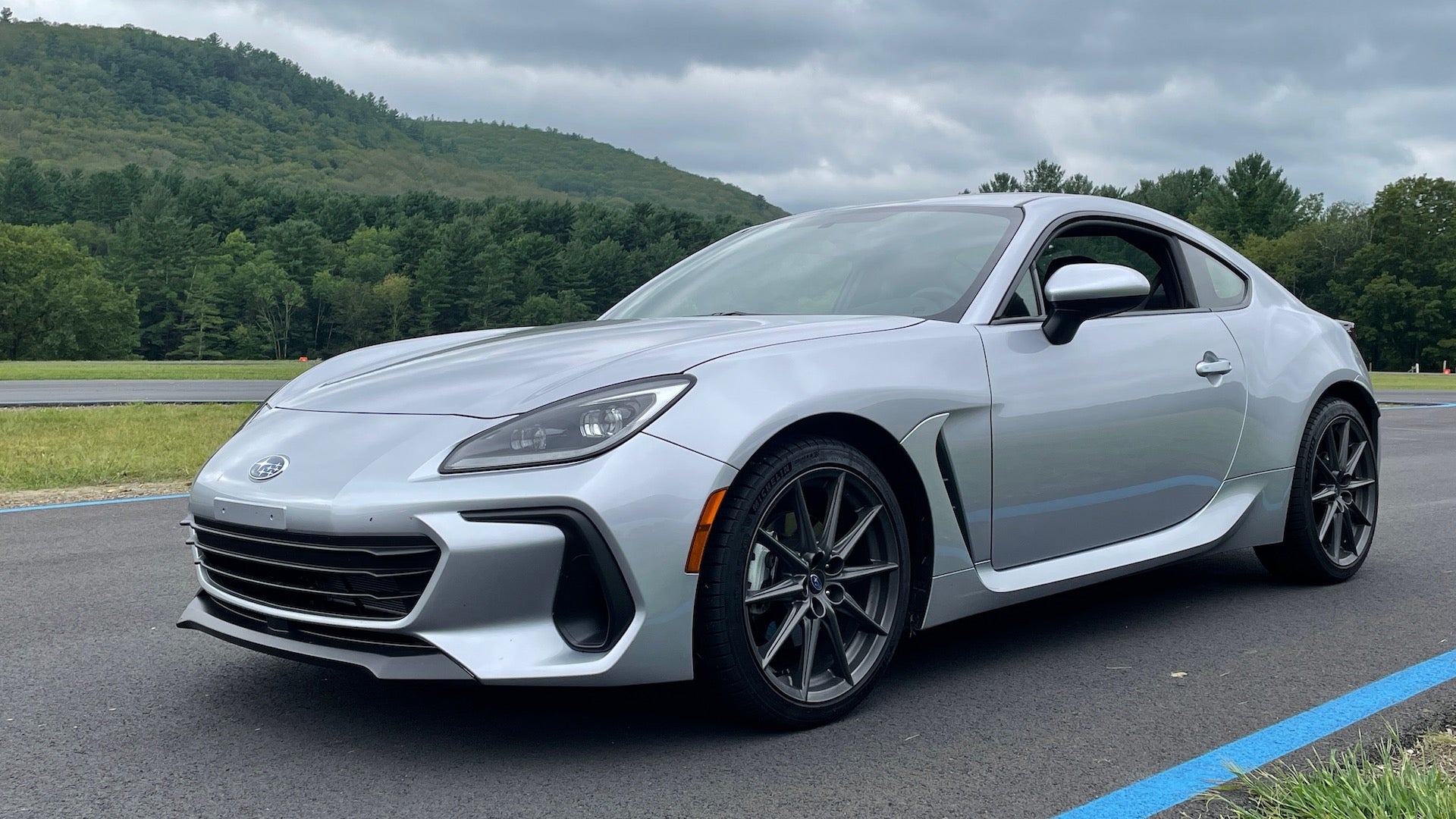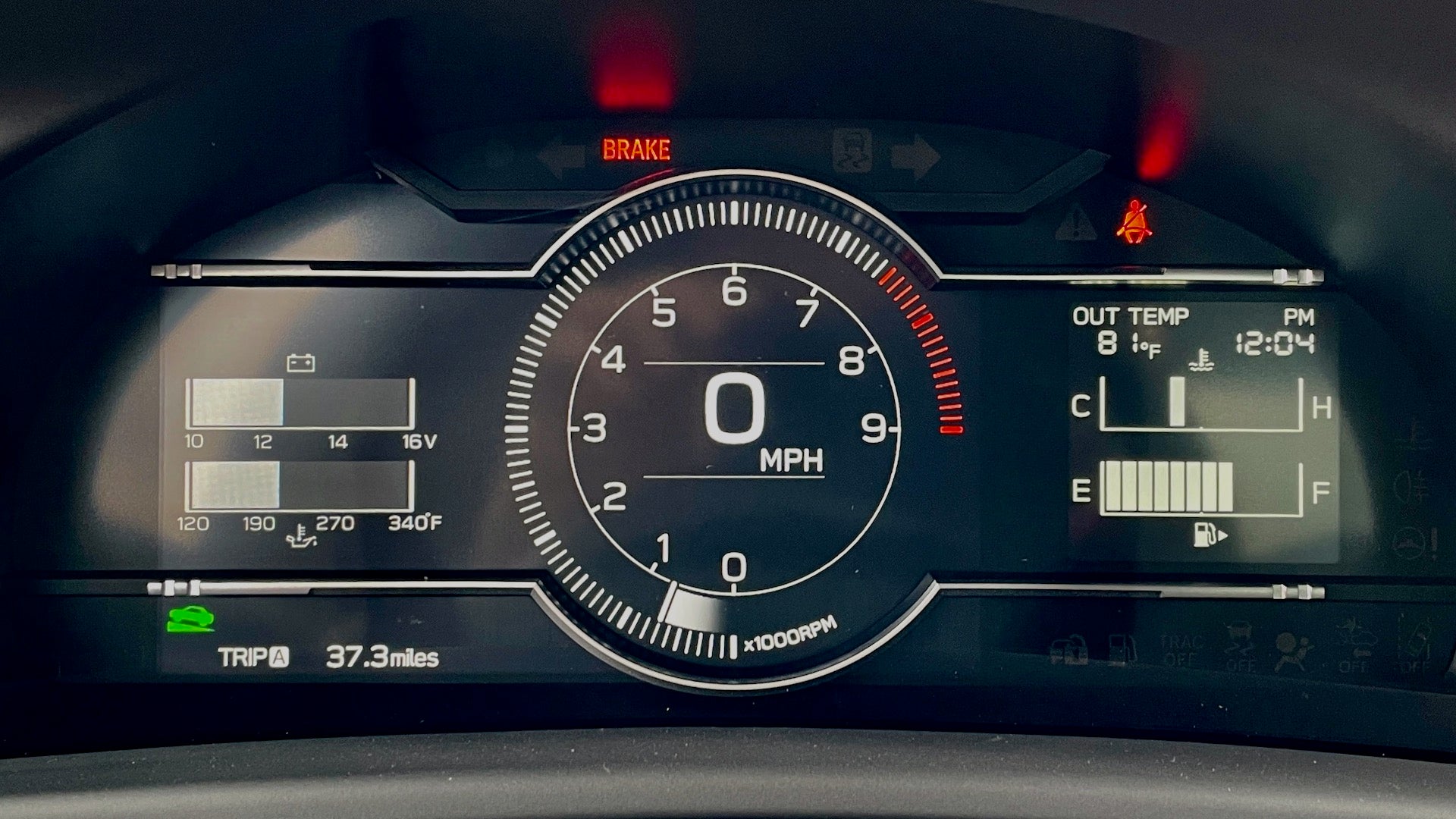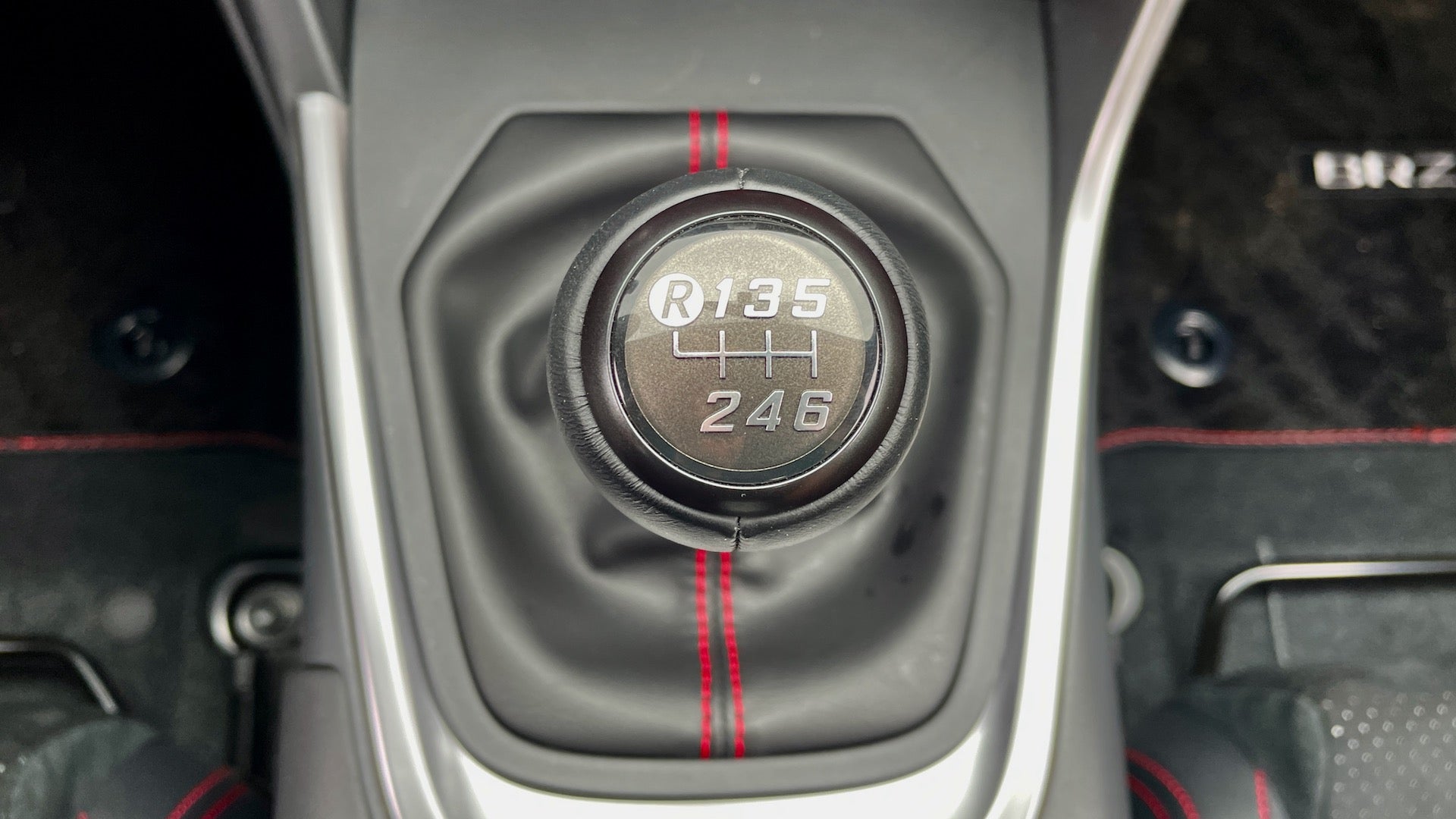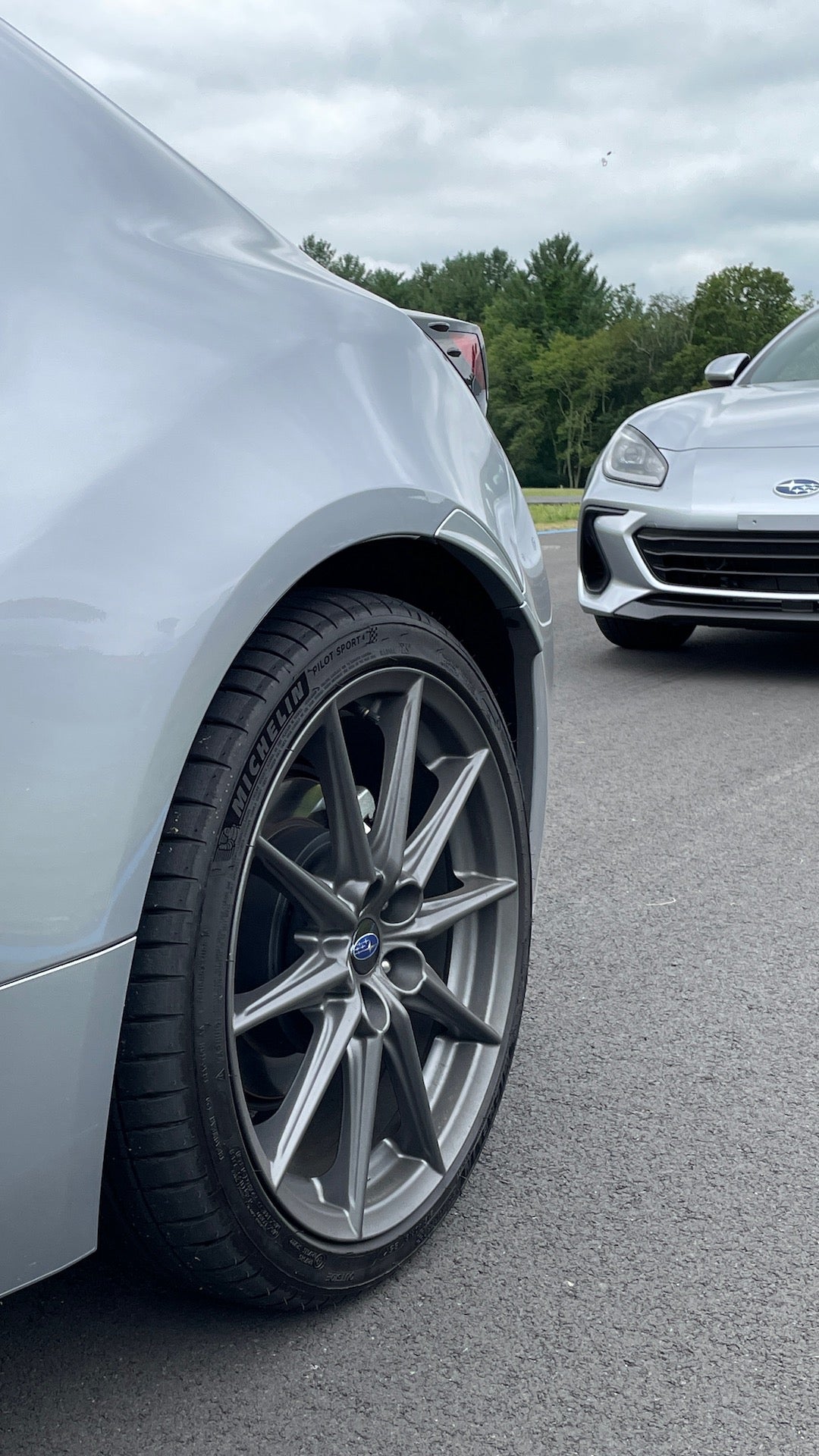The '90s are widely regarded as the golden age for Japanese performance cars, but as used Toyota Supra values balloon to the realm of unattainability, the barrier to entry for reliving those older rides is becoming higher by the week. However, I'm not too concerned because after a stint in the new 2022 Subaru BRZ around Connecticut's fantastic Lime Rock Park racetrack, I found the spirit of old-school, affordable performance is alive, well, and shall soon be available at your local Subaru dealer for about $30,000.
While it's still not perfect, the new BRZ is an admirably fun car to drive and a marked improvement over the original in pretty much every way that matters. And between it, the new Nissan Z, the imminent Acura Integra resurrection, a Miata that hasn't stopped rocking for 32 years, and promised Si and Type R variants of Honda's already-solid, new-gen Civic, the future of fun Japanese cars is looking mighty bright.
The Toyota/Subaru family of sports cars is one I know intimately: I used to own a Scion FR-S, the first-gen Toyota version of this car. It was an ownership experience that admittedly had its fair share of issues but when it worked, I greatly enjoyed that Toyobaru and its budget-Porsche handling. I used to get a little defensive when people criticized it for not being quick or powerful enough, but now that I no longer own one and, more importantly, have driven this new BRZ, I can finally, confidently concede. Yes, the old Toyobaru needed more power because this new, torquier version is an objectively better sports car.
But if "new, faster BRZ is better than old BRZ because it is faster" is the only thing you take away from this review, I wouldn't be very good at my job because there's quite a bit more going on with Subie's redesigned coupe than just a bigger engine. Let's explore.
2022 Subaru BRZ: By the Numbers
- Base Price (Price as Tested): $28,955 ($31,455)
- Powertrain: 2.4-liter four-cylinder | 6-speed automatic or 6-speed manual | rear-wheel drive
- Horsepower: 228 @ 7,000 rpm
- Torque: 184 lb-ft @ 3,700 rpm
- Cargo Volume: 6.3 cubic feet
- Seating Capacity: 4
- Curb Weight: 2,815 pounds (Premium MT) to 2,881 pounds (Limited AT)
- EPA Fuel Economy: 20 mpg city, 27 highway, 22 combined (MT) | 21 mpg city, 30 highway, 25 combined (AT)
- Quick Take: The new Subaru BRZ is a solid second outing that fixes the faults of the original.
What's New?
Judging from the all-new sheet metal and fresh interior, you'd be forgiven for assuming this second-generation BRZ is a wholly new car all the way to the bones. Its head- and taillights have been streamlined, yet its silhouette is familiar. And like that new Nissan Z, refreshed Lexus IS, or—dare I say it—the Ferrari F8, it actually rides on a modified version of its predecessor's platform. The new BRZ is 1.2 inches longer than the old one while its wheelbase and height grow ever so slightly (0.2 and 0.04 inches, respectively). Overall width goes completely unchanged.
The outgoing version's 2.0-liter is gone and in its place sits a naturally aspirated version of the Subaru Ascent SUV's 2.4-liter flat-four, making 228 horsepower and 184 pound-feet of torque, increases of 23 hp and 28 lb-ft, respectively. Peak power arrives at 7,000 rpm while full torque is available at just 3,700 rpm. Most importantly perhaps, the frustrating torque dip that plagued the old BRZ right in the middle of its rev range is almost entirely gone. Subaru also says this new engine weighs the same and takes up just as much room as the old motor, despite the increased displacement, for the benefit of handling.
Torsional stiffness is up 50 percent while lateral bending rigidity has been improved by 60 percent. As before, a limited-slip differential is standard, as are MacPherson struts in the front and double-wishbones out back. The standard tire remains Michelin's delightfully slidable Primacy HPs, but stickier Pilot Sport 4Ss now come on the higher Limited trim, along with bigger 18-inch wheels—wheels which I'm, like, 99 percent sure have been borrowed from Toyota's overseas-only GR Yaris hot hatch. So that's cool.
On the Subject of Toyota...
Just like the last-gen, the new BRZ is the result of a joint venture between Subaru and Japan's biggest automaker, Toyota, with Subie taking care of the engineering and manufacturing while Toyota worked on the design and contributed its D-4S fuel injection system. We've already driven the Toyota version of this car, the GR 86, and while the main specs and performance figures are indeed the same, Subaru sprinkled some minor engineering tweaks and additions it says give the BRZ its own distinct feel, including bespoke engine, damper, and steering tuning, as well as different spring rates all around and some slightly upgraded stabilizer hardware.
Of course, the front of the BRZ also looks different by way of a grille that grins rather than the aggro-frown that characterizes the GR 86's maw. The Subaru's mouth is also flanked by two pieces of trim textured to mimic sharkskin, supposedly cutting down on surface turbulence, for improved aerodynamics.
Driving Impressions
Okay, so it might have fishskin-inspired aero now but at its core, not much has changed about the BRZ’s fundamental formula. Naturally aspirated boxer-four in the front, rear-wheel drive, standard six-speed manual in the middle, and a chassis that prides itself on being light and low. As a result, driving this new one feels mostly similar to driving the old one in all of the best ways. The changes Subaru did make, however, have greatly improved this rear-drive sports car.
To start, boring the engine out to 2.4 liters has allowed the new BRZ to hit 60 mph 12 percent sooner than before, with the manual transmission version doing the sprint in six seconds flat. Surging down Lime Rock’s Sam Posey Straight, the speed on tap still isn’t exactly face-ripping but is now enough to genuinely thrill. Flinging it up the Connecticut circuit's slightly harrowing but awesome Uphill section, the BRZ's new, torquier engine had no issues muscling its way there, even when momentum was no longer in our favor due to my own subpar handling of the previous turn.
Flying over the crest, a lesser performance vehicle might have been flummoxed by the sudden change in altitude, but the BRZ's suspension stayed just on the side of composed, coming back down with enough of a shimmy to get the heart rate up, but not so wild as to become truly frightening. As it always has, Subaru makes a big deal out of this car’s incredibly low center of gravity (the driver's seat is so low this time around that the car's CoG can be higher than your hip-point if the seat is adjusted low enough) and its improved suspension components. Lime Rock might just have been the perfect showcase for why those things make for an excellent sports car.
Steering, by the way, remains satisfyingly responsive and operates with a lightness that feels appropriate for this type of car. It’s precise, too, but the precision here never feels quite as mathematical as the racks in some other (usually German) performance cars do. It's steering that makes the BRZ feel a bit less machine-like and more like a living thing. It’s quite an endearing quality that I also found in the last-gen Toyobaru and am glad has been carried over here.
The brake pedal is progressive, un-jerky, and perfectly usable on the street—something that can also be said about the ride. The BRZ may be scrappy and low-slung, but its on-road comfort is extremely forgiving. Almost uncharacteristically so. Bumps were noticeable but expertly damped so I never experienced any real discomfort over the hour or so I had with it on public roads. New, wider-looking front seats remain relatively sporty-feeling and well-bolstered. Subaru says these seats have spread out and softened the pressure points on the driver's body, but I thought they felt noticeably less tight and fitted than those inside the outgoing car.
Subaru's standard six-speed shifter felt familiar; light and appreciably mechanical, with the path between second and third gear now more chamfered than before for a smoother, easier action. In the pantheon of modern and reasonably priced manual shifts, the BRZ's doesn't feel as good as the Honda Civic Type R's or the Mazda MX-5 Miata's but sits comfortably in third place after those two.
Speaking of Other Cars
Bar its own Toyota GR 86 twin, the BRZ's closest competitor in both price and spirit would probably be that aforementioned Miata. The Mazda remains the lighter car in terms of both on-paper curb weight and behind-the-wheel feel (it's also a convertible which, depending on your personal relationship with the sun, maybe a pro or con) but isn't as practical, working with a significantly smaller cabin and no rear seats.
Those with somewhat bigger budgets and garages should also consider an EcoBoost Ford Mustang with the High Performance Package, which can be had for about $35,000. No, its heavier, bigger, muscle car-body isn't quite as tossable as the Japanese alternatives, but Ford's turbocharged 2.3-liter offers significantly more power (up to 330 hp) and also sounds the best, at least when equipped with the High Performance Pack's exhaust.
Frankly, you can't go wrong with the new BRZ, the current Miata, or the turbocharged Mustang. All will provide reasonably priced four-cylinder thrills in distinctly different ways. If featherweight handling is absolutely what floats your boat, Miata will always be the answer. If you'd like more room, more power, more butch styling, and just generally more car and are willing to sacrifice utmost lightness (and more money) in exchange, the Mustang is a more-than-solid choice.
The BRZ, however, splits the difference, offering more practicality and, to my butt dyno at least, more substantial grunt than the Mazda but remaining superior to the entry-level 'Stang when it comes to lightness and agility.
How Much Does It Cost?
Other than color, there are two key decisions one must make when one buys a 2022 Subaru BRZ: manual or automatic and Premium or Limited trim. Both transmissions can be had on either trim and the least expensive combo, the manual Premium, will cost $28,995 after destination. This is the one that runs on the slide-happy Michelin Primacy HP tires with 17-inch wheels. A new, eight-inch infotainment touchscreen and a seven-inch digital instrument display, complete with a boxer-theme bezel, are also standard across the board. Opting for the automatic gearbox on the base model jacks the price up by $1,600.
For $31,455, you can have the manual Limited car tested above, which adds bigger, 18-inch wheels, grippier Pilot Sport 4S tires, heated suede seats with red leather trim, some nicer window switches, as well as active safety features such as blindspot detection, lane keep, rear-cross traffic alert, and headlights that move with the steering wheel.
After tracking the BRZ on both tire options, the Limited's Pilot Sports were obviously grippier and more confidence-inspiring, but I actually preferred the base BRZ's Primacy tires, which slid way more willingly and made this car's limits that much more approachable and, ultimately, enjoyable.
Early Verdict
Taken as a whole, the 2022 Subaru BRZ is not all that different from the car it replaces. But it is better. It's quicker, more enjoyable on track, more livable on the street, and better looking.
Some caveats? The new BRZ's engine does sound better and less thrashy than before (with help, in part, from some speaker-derived vroom-vroom noises that cannot be turned off), but the audio here remains far from musical. The interior and infotainment are, in a similar vein, a step up from the old BRZ's but still exude slight whiffs of Fisher-Price. But for a sub-$30,000 car, this is not so much a complaint as it is merely an observation.
Purely as a driving machine, however, Subaru's rear-drive sports car is supremely well-balanced. Its approachable nature means it's still a great starting point for anyone looking for their first serious sports car. The increased power means genuine thrill and rewards for seasoned drivers as well. As far as sequels go, the 2022 Subaru BRZ is one of the good ones.
Got a question for the author about the new BRZ? You can reach them here: [email protected]
















